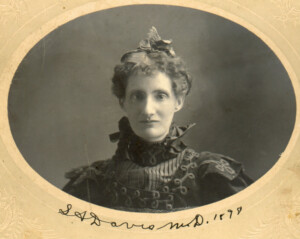Frequently Asked Questions
Items offered to the museum go through a review process with our Museum Advisory Committee which is made up of individuals from the historic community qualified to assess the items, their relevance to the scope of collection policy, and whether the museum has the necessary preservation resources to care for the item.
If you are considering a donation to the museum of historic artifacts or library reference materials, please read the following:

Dr. Susan Araminta Davis Bean, 1898. WHC Collections 1992.013.0003
Further Questions?
If you have questions beyond what is covered in this document or the donation form please contact research staff via email or at 503-585-7012 ext 257. Please be aware that our research staff and volunteers are not in the library every day. We will get back to you as soon as we can. Your patience is appreciated.


